- SAFETY TIPS
- SAFETY QUIZ

- Safety Tips

Using an Anchor Ball
- By Kevin Falvey
- June 20, 2012
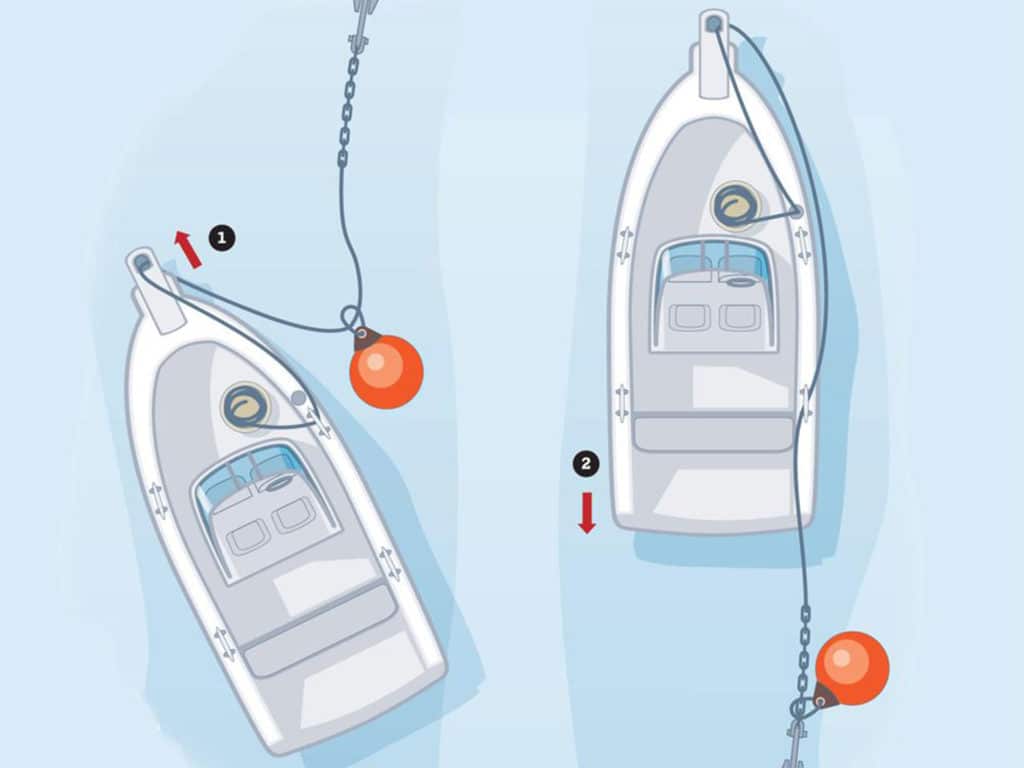
Having a windlass beats weighing anchor with your back by a measured mile. Yet a windlass costs some bucks, and not all boats have the space to fit one. Also, the slow drop of a power-out windlass makes it difficult to anchor precisely, compared with the speed with which a free-dropped anchor hits the bottom. Add learning new techniques and having a backup plan should the windlass break, and you’ve got the impetus for this instructional on using an anchor ball.
What Is It?
An anchor ball is a round fender with enough buoyancy to support a rode and anchor. A 20-inch-diameter ball has approximately 180 pounds of buoyancy and is the most popular size used by seasoned skippers. To this ball, it’s common to affix a three-foot trace of line (but see tip later). At the other end of the trace, attach a large carabiner snap. To this snap, connect a specialized piece of equipment called an anchor ring.
Using an anchor ball is like heaving a line over a tree branch and connecting one end to a truck’s hitch in order to raise a heavy weight at the other end. Since limbs are rare on the water, run the rode through the ring, which is supported by the buoyancy of the ball. The boat is the truck, the ring and ball the limb.
The Practice
To haul anchor, place the anchor ring around the rode and snap the line to it. The snap connects the ball and also “closes” the ring, capturing the rode. Now power toward the anchor, angling off just a bit so you’re not quite running parallel to the rode. (1) A good, fast troll that provides confident steerage is fine.
You pass the anchor, which of course is on the bottom, and continue until the ball, with the rode captured in the ring, slides by the boat. Needless to say, you have to be careful not to run over the rode and foul the props. Here’s a tip I use to avoid that: Snap the ring tight to the ball instead of using the three-foot line. With a long trace, the rode is three feet below the surface. But with a short trace, the ring is only a foot down, and so the rode is closer to the surface and above the level of most props.
Also, at this point I would have a crew member standing by to grab the rode as the ball passes by, bring it aboard and belay it to a stern cleat. With the rode tied at the stern, and you moving the boat forward, the chance for tangles are virtually eliminated.
Note that if you are solo, or don’t have solid crew aboard, you can leave the rode secured at the bow and continue heading forward. In that case, extra care is required on your part to avoid fouling the rode.
Crew or not, as you continue forward, the ball will descend the rode, and submerge as the anchor breaks free. The combination of the ball’s bouyancy and the boat’s pull lifts and yanks the anchor out backward, and the anchor surfaces with great commotion in the wake, with the flukes neatly hanging in the ring. Now all you do is haul in the virtually weightless ground tackle, or back up toward it if you like. (2)
As with any technique, it’s prudent to practice in clear, open water a few times before doing it for real. It’s easy as pie once you try.
The U.S. Coast Guard is asking all boat owners and operators to help reduce fatalities, injuries, property damage, and associated healthcare costs related to recreational boating accidents by taking personal responsibility for their own safety and the safety of their passengers. Essential steps include: wearing a life jacket at all times and requiring passengers to do the same; never boating under the influence (BUI); successfully completing a boating safety course; and getting a Vessel Safety Check (VSC) annually from local U.S. Coast Guard Auxiliary, United States Power Squadrons(r), or your state boating agency’s Vessel Examiners. The U.S. Coast Guard reminds all boaters to “Boat Responsibly!” For more tips on boating safety, visit www.uscgboating.org .
- More: Knowing Your Boat , Safety Tips
- More Safety Tips
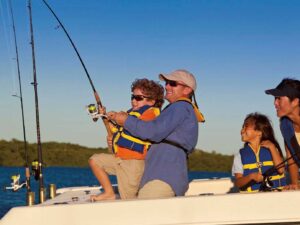
Ordering Life Jackets Online
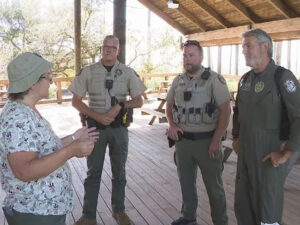
After a Devastating Loss, One Family’s Resilience Leads to a Lifesaving Rescue

Captain Trusts His Instincts in Long-Shot Rescue

Safe Boating Tips for Rental Customers
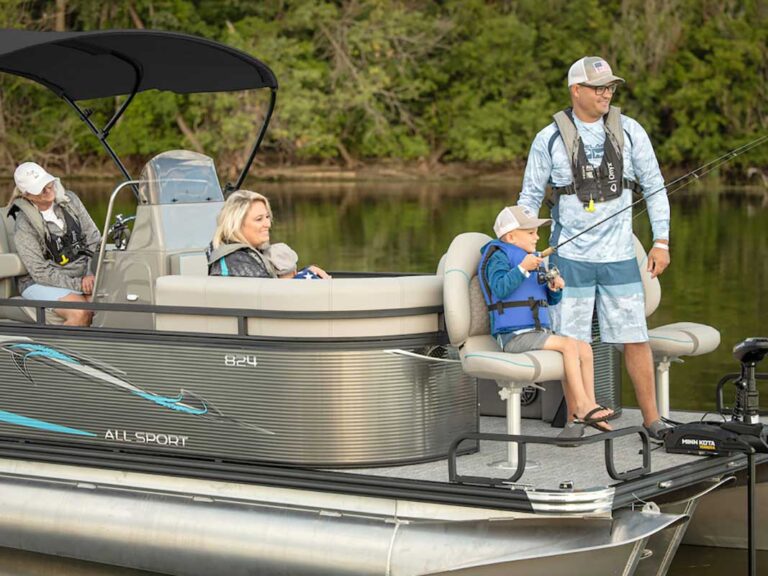
What’s the Difference Between a Life Jacket and a PFD?
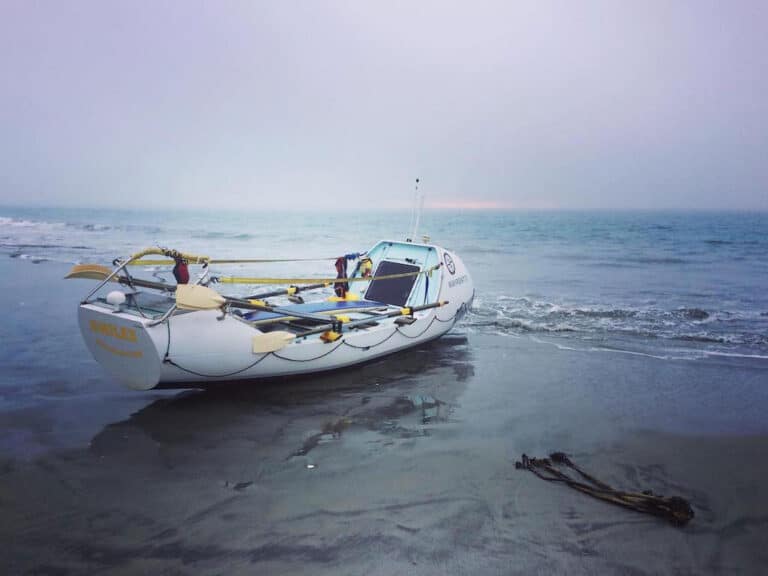
The Pocket-Sized Beacon That Could Save Your Life
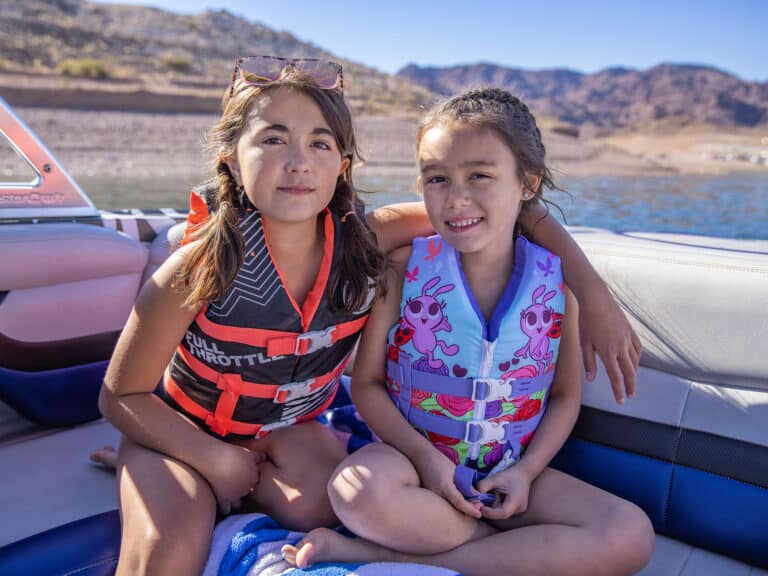
A Boating Dad’s Guide To Navigation

PWC Safety Tips
- Privacy Policy
- Terms of Use
- Safety Quiz
- Cruising World
- Sailing World
- Salt Water Sportsman
- Sport Fishing
- Wakeboarding
- 2024 BOAT BUYERS GUIDE
- Email Newsletters
- Boat of the Year
- 2024 Freshwater Boat and Gear Buyers Guide
- 2024 Boat Buyers Guide
- 2024 Water Sports Boat Buyers Guide
- 2024 Pontoon Boat Buyers Guide
- Cruising Boats
- Pontoon Boats
- Fishing Boats
- Personal Watercraft
- Water Sports
- Boat Walkthroughs
- What To Look For
- Watersports Favorites Spring 2022
- Boating Lab
- Boating Safety
- Ultimate Boat Giveaway

Using an Anchor Ball
- By Kevin Falvey
- Updated: November 10, 2010
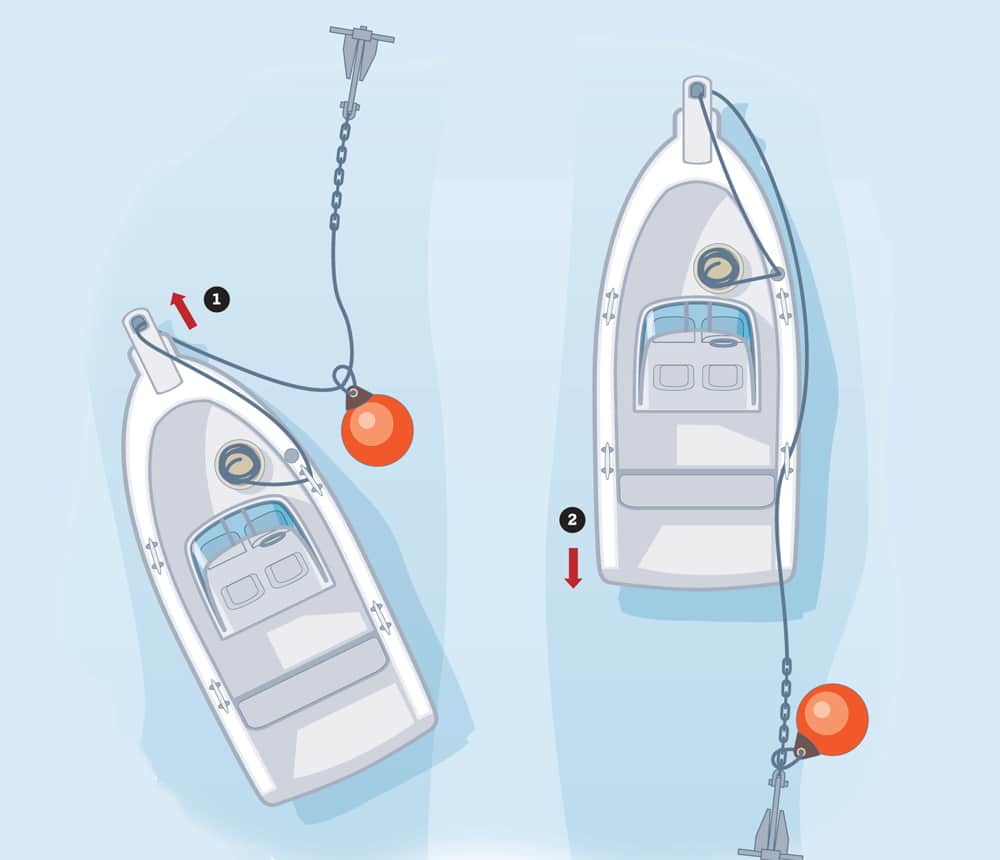
Having a windlass beats weighing anchor with your back by a measured mile. Yet a windlass costs some bucks, and not all boats have the space to fit one. Also, the slow drop of a power-out windlass makes it difficult to anchor precisely, compared with the speed with which a free-dropped anchor hits the bottom. Add learning new techniques and having a backup plan should the windlass break, and you’ve got the impetus for this instructional on using an anchor ball.
What Is It? An anchor ball is a round fender with enough buoyancy to support a rode and anchor. A 20-inch-diameter ball has approximately 180 pounds of buoyancy and is the most popular size used by seasoned skippers. To this ball, it’s common to affix a three-foot trace of line (but see tip later). At the other end of the trace, attach a large carabiner snap. To this snap, connect a specialized piece of equipment called an anchor ring.
The Theory Using an anchor ball is like heaving a line over a tree branch and connecting one end to a truck’s hitch in order to raise a heavy weight at the other end. Since limbs are rare on the water, run the rode through the ring, which is supported by the buoyancy of the ball. The boat is the truck, the ring and ball the limb.
The Practice To haul anchor, place the anchor ring around the rode and snap the line to it. The snap connects the ball and also “closes” the ring, capturing the rode. Now power toward the anchor, angling off just a bit so you’re not quite running parallel to the rode. (1) A good, fast troll that provides confident steerage is fine.
You pass the anchor, which of course is on the bottom, and continue until the ball, with the rode captured in the ring, slides by the boat. Needless to say, you have to be careful not to run over the rode and foul the props. Here’s a tip I use to avoid that: Snap the ring tight to the ball instead of using the three-foot line. With a long trace, the rode is three feet below the surface. But with a short trace, the ring is only a foot down, and so the rode is closer to the surface and above the level of most props.
Also, at this point I would have a crew member standing by to grab the rode as the ball passes by, bring it aboard and belay it to a stern cleat. With the rode tied at the stern, and you moving the boat forward, the chance for tangles are virtually eliminated.
Note that if you are solo, or don’t have solid crew aboard, you can leave the rode secured at the bow and continue heading forward. In that case, extra care is required on your part to avoid fouling the rode.
Crew or not, as you continue forward, the ball will descend the rode, and submerge as the anchor breaks free. The combination of the ball’s bouyancy and the boat’s pull lifts and yanks the anchor out backward, and the anchor surfaces with great commotion in the wake, with the flukes neatly hanging in the ring. Now all you do is haul in the virtually weightless ground tackle, or back up toward it if you like. (2)
As with any technique, it’s prudent to practice in clear, open water a few times before doing it for real. It’s easy as pie once you try.
- More: anchoring , How-To , Seamanship
More How To
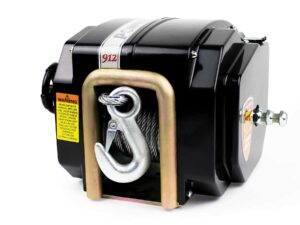
How to Choose a Trailer Winch
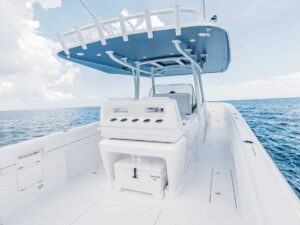
Best Non Skid Boat Deck Paint
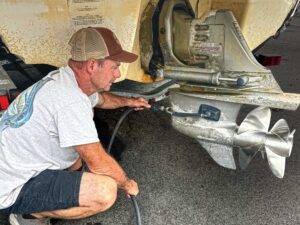
Midseason Sterndrive Maintenance
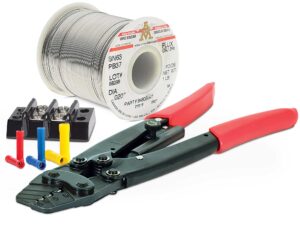
How to Properly Splice Wires on Your Boat
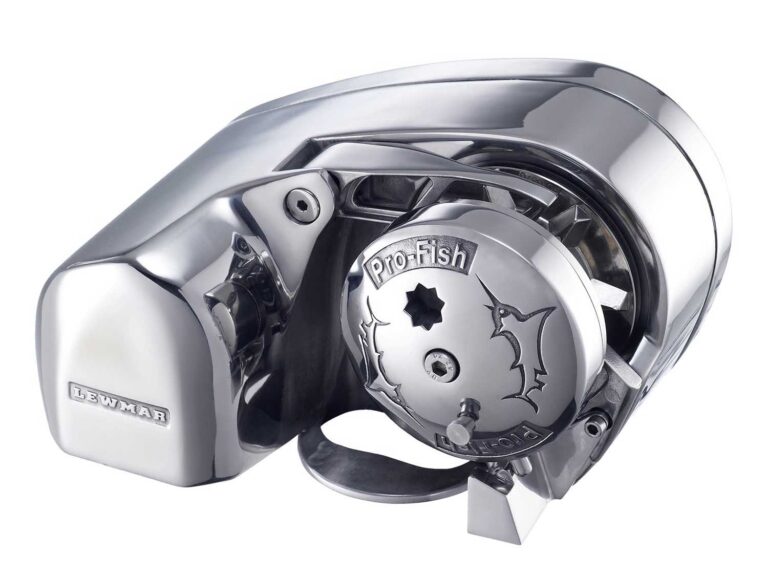
Ultimate Boat Anchor Winch Buyers’ Guide
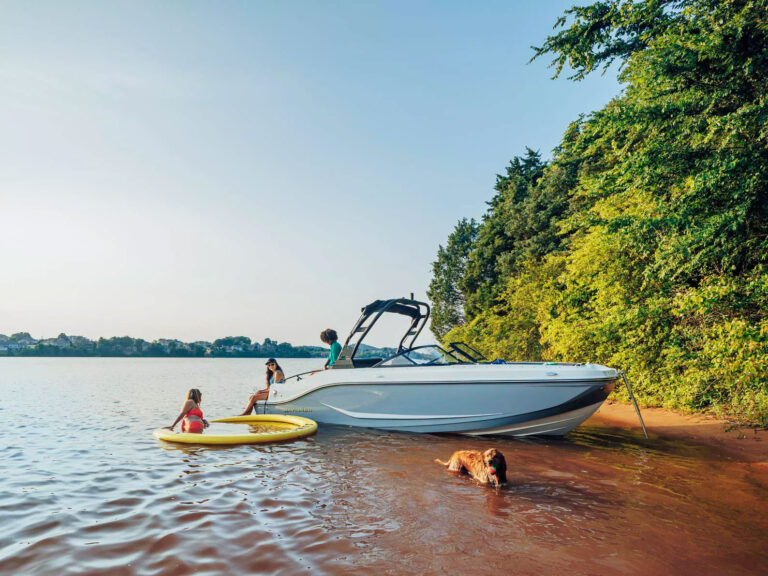
Bayliner 2024 D Series Deckboats Debut
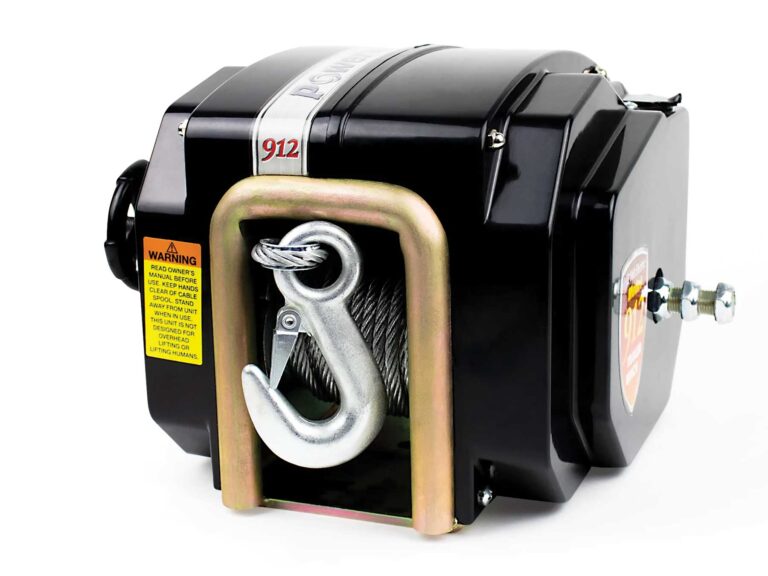
Is Your Trailer Right for Your Boat?

- Digital Edition
- Customer Service
- Privacy Policy
- Terms of Use
- Cruising World
- Sailing World
- Salt Water Sportsman
- Sport Fishing
- Wakeboarding
Many products featured on this site were editorially chosen. Boating may receive financial compensation for products purchased through this site.
Copyright © 2024 Boating Firecrown . All rights reserved. Reproduction in whole or in part without permission is prohibited.
Anchoring Made Easy: A Newbie’s Guide to Securing Your Sailboat
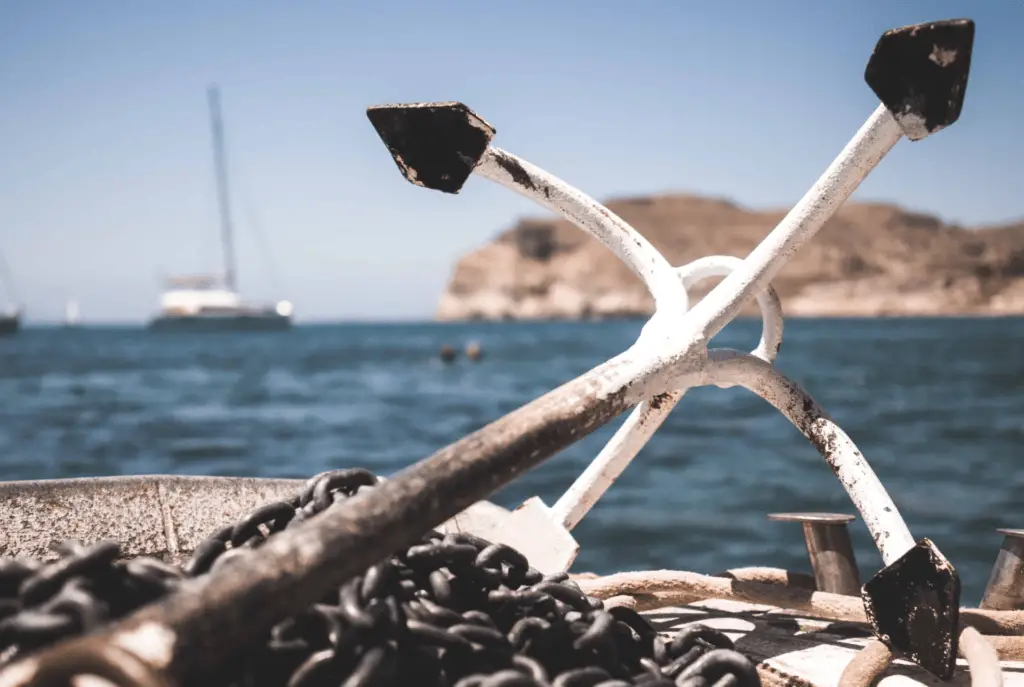
What is anchoring?
Anchoring is a fundamental aspect of boating that involves securing your sailboat in a specific location using an anchor and chain.
When you anchor your sailboat, you are essentially creating a stable and secure position for your boat, regardless of the wind or current.
Table of Contents
Can you anchor a sailboat anywhere?
No, you can’t anchor just anywhere.
- First and foremost, you need to be aware of any regulations or restrictions in the area you plan to anchor.
Some harbors, marinas, or waterways have specific rules regarding anchoring, and it’s important to respect these guidelines.
- In addition, you’ll need to consider the bottom conditions.
Anchoring in rocky or weedy areas can make it difficult for your anchor to dig in and secure your sailboat . Ideally, you’ll want to find a sandy or muddy seabed, as these provide better holding power for anchors .
- Furthermore, you should avoid anchoring in areas with heavy boat traffic.
Not only can this increase the chances of collisions, but it can also make it difficult for you to safely drop and retrieve your anchor.
Choosing the Right Anchor and Chain Size
The size and weight of your anchor will determine its ability to hold your boat securely in place, while the chain provides additional weight and strength to keep the anchor in position.
So, how do you choose the right anchor and chain size for your sailboat?
- First, consider the size and weight of your sailboat .
Larger boats require larger anchors and chains to provide adequate holding power.
As a general rule of thumb, it’s recommended to use an anchor that weighs 1 pound for every 2 feet of boat length.
So, if you have a 30-foot sailboat, a 15-pound anchor would be appropriate.
- Next, think about the type of bottom you’ll be anchoring in.
Different anchor designs work better in different types of seabeds, such as sand, mud, or rocks.
For sandy bottoms, a fluke or plow-style anchor is often recommended, while a grapnel or claw anchor is better suited for rocky bottoms.
Picking the Right Spot to Anchor
Choosing the right spot to anchor your sailboat is essential for a safe and enjoyable experience on the water. Whether you’re planning a short stop or an overnight stay, finding the perfect location can make all the difference.
So, how do you pick the right spot?
- First, consider the depth of the water.
You’ll want to find a spot with enough depth to accommodate the draft of your sailboat, plus some additional clearance to account for tides or changes in water levels.
Consult nautical charts or use a depth sounder to determine the water depth in the area you plan to anchor.
- Next, assess the bottom conditions.
Look for a sandy or muddy seabed, as these provide better holding power for anchors.
Avoid areas with rocky or weedy bottoms, as they can make it difficult for your anchor to dig in and secure your sailboat.
- Consider the surrounding environment as well.
Look for sheltered areas or natural features such as coves or bays that can protect from strong winds or currents . These areas will offer a more comfortable and secure anchorage for your sailboat.
- How Many Anchors Should You Have For Your Boat?
- The Power of Anchors: Why You Should Use Them to Keep Your Boat Safe
- Mooring Made Easy: A Step-by-Step Guide to Picking Up a Mooring for Your Boat
- How To Dock Your Boat Like A Pro: Stern-In, Bow-In, And Alongside
Preparing Your Sailboat for Anchoring
When preparing your sailboat for anchoring, there are several important things you need to do to ensure a smooth and successful docking experience.
Here are four essential tasks to complete before dropping your anchor :
1. Check your equipment: Before setting sail, make sure you have all the necessary anchoring equipment on board.
This includes an anchor, chain, and any additional gear such as a buoy or buoy line. Inspect your equipment to ensure it is in good condition and free of any damage or wear.
2. Secure loose items: Stow away any loose items on your sailboat that could become a hazard during the anchoring process.
This includes things like ropes , fenders, or loose equipment. Secure these items in designated storage areas or tie them down to prevent them from shifting or falling during anchoring.
3. Clear the deck: Remove any obstructions from your deck that could interfere with the anchoring process.
This includes items like cushions, coolers, or other personal belongings.
Clearing the deck will provide you with a clean and clutter-free area to work in when dropping anchor .
4. Prepare your crew: Brief your crew on their roles and responsibilities during the anchoring process.
Make sure everyone knows where to be and what to do when it’s time to anchor.
Assign specific tasks to each crew member, such as handling the anchor or controlling the helm, to ensure a coordinated and efficient docking experience.
The Step-by-Step Guide to Anchoring Your Sailboat
Follow these instructions, and you’ll be able to safely and effectively anchor your boat in no time.
1. Choose your anchor location
Before you start the process, select a suitable location to drop your anchor . Consider factors such as water depth, bottom conditions, and nearby hazards.
Once you’ve chosen the spot, approach it slowly and stop the boat when you’re in the desired location.
2. Prepare your anchor and chain
Make sure your anchor is ready for deployment. Remove any tangles or knots in the chain and ensure it’s securely attached to the anchor.
Double-check that the anchor is properly stored and accessible for deployment.
3. Determine the amount of anchor chain
Decide how much anchor chain you need to deploy based on the depth of the water.
A general rule of thumb is to use a ratio of 5:1 or 7:1 for the length of the anchor chain to the depth of the water. For example, if the water is 10 feet deep, deploy 50 to 70 feet of chain.
4. Drop the anchor
Carefully lower the anchor over the bow of your boat while paying out the chain.
Use a controlled speed and avoid letting the chain drop too quickly, as this could damage your boat or the anchor.
Make sure the anchor hits the bottom before releasing the chain.
5. Set the anchor
Once the anchor is on the bottom, put the boat in reverse at idle speed to ensure the anchor is firmly embedded.
Give it some time to settle and check that the boat is staying in position. Use a landmark on shore or your GPS to monitor any drifting.
6. Secure the anchor
Once you’re confident that the anchor is set, cleat off the chain or secure it to a bow cleat to prevent any accidental movement or slippage.
Double-check that the anchor is holding by slowly reversing the boat to put some pressure on the anchor.
- Congratulations! You’ve successfully anchored your sailboat. Remember to monitor your position and the anchor’s holding power throughout your stay. If you need to reposition or adjust the anchor, follow the same steps in reverse order.
How long can you be at anchor for on a sailboat?
In general, you can stay anchored for a few hours or overnight, but it’s important to check local regulations to ensure compliance.
Some areas have time limits for anchoring or require permits for longer stays.
Additionally, you’ll need to consider the weather forecast. If there are strong winds or rough seas expected, it may not be safe to remain anchored for an extended period.
What side of the vessel you should never anchor?
There is actually one side you should avoid at all costs: the bow , or the front of the boat.
Anchoring on the bow can lead to several problems and safety hazards.
Firstly, it can interfere with the boat’s steering and maneuverability, making it difficult to control the vessel in tight spaces or when approaching docks .
Secondly, anchoring on the bow can cause the boat to swing in unpredictable directions, especially when wind or currents change.
This can increase the risk of collision with other boats, docks, or hazards in the water.
To avoid these issues, always anchor your sailboat off the stern, or the back of the boat. This allows for better control and maneuverability, as well as a more stable anchoring experience.
Additionally, anchoring off the stern keeps the bow free for easy boarding and disembarking, making your sailing experience more convenient and enjoyable.
What happens when a sailboat drag anchor?
When a sailboat drags an anchor, it means that the anchor is no longer holding the boat in place.
This can occur for several reasons, such as changing wind or current conditions, a poorly set anchor, or inadequate anchor line length.
As the boat starts to drift, it can potentially collide with other boats, docks, or even run aground.
In this situation, it’s important to act quickly and calmly.
First, assess the immediate surroundings to determine any potential dangers or obstacles.
Then, try to reset the anchor by moving the boat in the opposite direction of the drift and dropping the anchor again.
If this doesn’t work, you may need to find a new anchorage or consider alternative methods, such as using a second anchor or seeking assistance from nearby boaters.

Anchoring & Mooring
With so much investment literally riding on your anchor, your boat's anchoring system is no place to cut corners. your choice of anchor depends on the size and type of your boat, and the weather and anchoring conditions you generally encounter..
Boats with heavy displacements or superstructures that present a great deal of wind resistance need heavier gear. The same is true of cruising yachts that brave a wide variety of conditions and may sometimes have to anchor in open waters.
Although not required by Federal Law, it is recommended you carry one anchor of sufficient size and strength to hold your boat for an extended period, like overnight--or in an emergency situation, such as if you run out of gas. When you are thinking or buying an anchor - BIGGER IS BETTER.
Also, there is safety in numbers. No anchor will work for you in every situation, so if you have space carry two anchors--preferably of different types.Many people choose to carry a small anchor, or "lunch hook", and a larger working or storm anchor. The lunch hook is for use in calm weather and when the crew is monitoring the anchor. Working and storm anchors are useful at times when the crew is asleep or ashore, and during heavy weather, when winds are 30 miles an hour and over.
The general name for all of the equipment you need to anchor your boat is "ground tackle". This includes an anchor, chain, line and connecting elements. The anchor line, including chain, is called the rode.
Playing Hooky
Just as boats come in a wide variety of shapes and sizes, so do anchors. Choosing an anchor is easy, choosing the right one for your boat can be very difficult. Your first task in choosing an anchor is to have an understanding of three things:
- Your Boat - Your boats' size, weight and design characteristics affect what kind of anchor you will need to use. For instance, a 30 foot 10,000 pound houseboat needs a larger anchor than a 30 foot 6000 pound speedboat.
- Where You're Going - Where you plan to anchor often dictates what type of anchor you should use. Is the bottom rock, or is it soft mud? If you are not familiar with the area, ask around or look at a local chart.
- Local Conditions - Anchoring in a calm protected cove can be quite different than anchoring offshore or on a large open bay. And don't forget the weather--high winds, tides and waves can all make anchoring difficult, if not impossible.
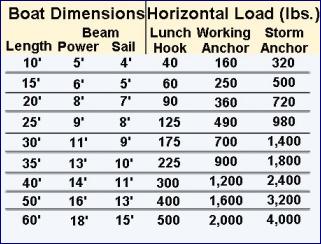
Anchors are rated by "holding power"--which is the ability of an anchor to hold a given weight. Keep in mind that a 10,000 pound boat may only require an anchor with a holding power of a few hundred pounds on a calm day, but may need 1,000 pounds of holding power or more on a stormy day.
Anchor Types
There are several types of anchors and you should choose a style based on the bottom characteristics in the areas you will anchor most often. Then, choose a size based on the size and weight of your boat.
Lightweight or "Danforth" Anchors
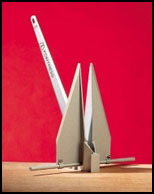
Lightweight type anchor with two long pivoting "flukes"; designed to reduce clogging with mud and grass; range from 2.5 pounds to nearly 200 pounds, and are generally made of cast galvanized metal, though some models are machined from a light-weight aluminum composite. When dropped, flukes dig the anchor into the bottom and the anchor buries itself and part of the anchor line.
Commonly used on small recreational boats, as they are relatively light weight for the amount of holding power they provide, especially in comparison to other anchors. Best in hard sand or mud, where flukes can easily dig into the bottom.
Not recommended for very soft or loose mud, which can ball up around the flukes; or on rocky bottoms where the flukes cannot penetrate. Also not recommended for grassy bottoms, which the flukes tend to slip off.
Kedge or Navy Anchors

A more traditional style anchor with arks, flukes and stock. Good in heavy grass, weeds, rocky bottoms or hard sand where one arm can penetrate a crevice. Not good in mud or loose sand, where flukes can't dig in.
Functions differently than previous anchors as it is not a burying anchor; one arm digs into bottom and one lies exposed. Generally only used by very large ships, as it relies on weight for most of the holding power; not really suitable for recreational use other than for a lunch hook.
Grapnels Anchors
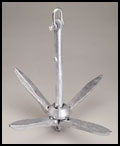
Very inexpensive, but not much holding power. Some models are made of bent re-bar, others are made of galvanized metal and have folding flukes. Good for recovering items on the bottom, or for wreck reef anchoring. Commonly used on very small boats such as canoes or jon boats.
Plow or "CQR/DELTA" Anchors

The plow styles' good holding power over a wide variety of bottom types makes it a top choice of cruising boaters. Has either a fixed (Delta style) or a pivoting (CQR) shank.
When dropped in the water, a plow lands on its side, then when pulled, buries itself. Its shape allows it to reset fairly easily should the wind or tide shift the boat position.
Great in sand and on rocky bottoms, weeds and grass. Does not do well in soft bottoms. Generally made of galvanized metal, though they are available in stainless steel.
Claw or "BRUCE" Anchors
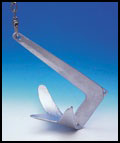
Unique shape of the claw allows a 360 degree turn without breaking out. Has similar performance to plow anchors,at a lower weight.
Sets just like a plow, but curved flukes make it easier for a claw to right itself no matter how it lands on the bottom, or how much the boat gets swung around.
Mushroom Anchors
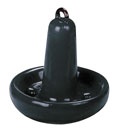
Mushroom anchors get their name from, as you might imagine, their rounded, mushroom shape. Mushroom anchors are used extensively for moorings, and can weigh several thousand pounds for this use.
The shape works best in soft bottoms, where it can create a suction that can be difficult to break. Decent for very small boats to use as a lunch hook, but not practical for larger boats. Both Buoys and Beacons may have lights attached, and may have a sound making device such as a gong, bell or horn. Both Buoys and Beacons may be called "marks".
Line and Gear
Depending upon the size and type of your boat, and where you anchor--your choices for an anchor line are either an all-rope anchor rode, a combination of rope and chain, or all chain.
Nylon Line in Three-Strand Twist
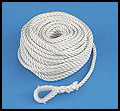
Three-strand line can absorb shock and the constant tugging associated with anchoring much better than braided line or chain alone. Chain may also be used, especially in anchorages that are primarily rock or coral, which may cut a nylon line. A length of chain should be used between the anchor and a longer length of line. The chain will add weight to set your anchor without making it too heavy to lift manually, while serving to exert a horizontal pull on the anchor to set it.
Nylon Three-Strand line is the leading choice for use as an anchoring line. Lines generally come in a "soft" or "medium" lie. Soft lines are generally softer to the touch, and loosely woven. These aren't as good as medium or hard lines for anchoring, as they are more prone to unraveling and chafing. Tightly wrapped lines are the best choice for anchoring.
Lines that have been treated with a wax-like coating are available. These lines help the line resist water/salt absorption. To help keep your lines in good shape, clean them from time to time by soaking them in soapy water. Never use bleach, as it can break down the line.

Chain may be used instead of nylon line for anchoring. Chain has several benefits, including added weight, chafe and wear resistance, and high strength. It also lowers the angle of pull on the anchor, which helps it to set more firn\mly into the bottom.
Chain is generally found made of galvanized steel, though you can find stainless steel and vinyl coated chain, which is designed to be non-marring to your deck.
Chain comes in three general varieties: "Proof Coil" is the most common, and is adequate for most marine uses. "BBB" ("Triple B" or "3B") chain has thicker, shorter links than proof chain. BBB is slightly stronger than proof chain, and is generally used for windlasses. Finally, "Hi-Test" chain is made of hardened steel, and is stronger and lighter than proof coil. Hi-test chain is favored by those wishing to avoid carrying too much weight.
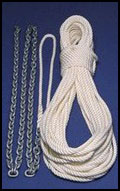
Combination anchor-rodes consist of both chain and nylon line. You may buy a combination rode, or you may make one yourself. Generally, it is recommended to have either one foot of chain for each foot of boat length, or to have one pound of chain for each pound of anchor length. Which ever method you choose, having more chain than necessary is never a bad idea.
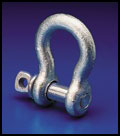
As the saying goes, a chain is only as strong as its' weakest link...Make sure that your anchor and line are attached to each other with adequate gear. Some lines come with plastic thimbles or eyes--but metal, either marine-grade stainless steel or hot-dipped galvanized steel, is best. Swivels and shackles should be inspected regularly for wear, and to ensure that the connections are tight and functional.
Scope: Length of the anchor line/ height of the deck cleat to the sea bed.
Before leaving the dock, you will need to determine how much anchor line, or "rode", you will need. It is recommended that you use a scope of 7:1, meaning that for every foot of water depth, you should use 7 feet of rode.

For example, to anchor in 10 feet of water, you would pay out 70 feet of line. Measure the scope as the ratio of the length of the anchor rode to the height of the bow above the bottom. If you're using a lightweight anchor on a small boat in good weather conditions, a shorter scope of 5:1 is sufficient and safe. A prudent boater always has extra line and chain on hand, just in case.
Minimum Working Rode Sizes
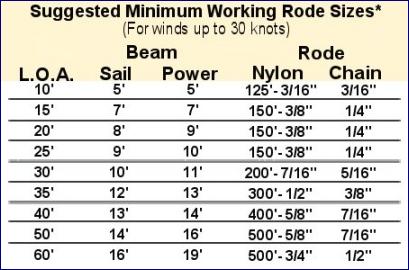
Suggested holding sizes assume fair holding ground, scope of at least 5:1 to 10:1, and moderate shelter from high seas.
Boats that operate generally in shallow waters, as on the East Coast of the United States, may get by with shorter rode lengths. As the wind picks up, deploying additional line will help maintain position, as will tossing out an extra anchor.
Setting Anchor
Anchoring can be accomplished quickly and easily by following a few simple steps.
- Check your chart for bottom characteristics and to determine that you are anchoring in a safe and allowable place. If there are rocks, shoals, reefs or other boats to consider, give them all as wide a berth as possible. Remember that other boats will often have different requirements for anchor rode length--larger or taller boats frequently need a great deal of rode. Also, keep in mind a possible swing of 360 degrees about the anchor with wind shifts or current changes.
- If your crew is not already wearing PFDs, have them put one on before going forward to set or retrieve an anchor or mooring.
- Secure the bitter end of the anchor line to a bow cleat. Make sure the line is ready to run free once tossed overboard.
- Head into the wind or current. Reduce speed and reverse the engine. When the boat starts to make a slight sternway through the water, lower - do not throw - the anchor.
- After you've let about a third of your line out, tug the anchor line to see how firmly it's set, and then continue to release the rode.
- Once you let out an appropriate amount of scope, make sure the line is properly tied off on the bow cleat.
- Even if anchoring only in designated anchoring areas, it is always prudent to have the appropriate signal such as an all-around white light on to notify other boats that you are anchored at night. During the day you must display a ball shape which is sized according to the size of your boat.
Staying Put
It's a good idea to take two immediate bearings. Select two items, one off each beam, that form a natural range and watch for any changes in their relationship. You can check these later to determine if you're boat is swinging as expected or if you're dragging anchor.
Picking Up a Mooring
One of the best ways to avoid the hassles of anchoring is to chose a cove or harbor with moorings available for your use. Mooring balls are identified by their white spherical or can shape, and having a blue horizontal band. It may have a number designation, a VHF contact # or name on it. You will typically have to pay a small fee to the harbor master to use a public mooring, but you can count on it being far cheaper than paying for dockage for the night.
Public moorings are professionally maintained and will use a large anchor or helix screw fixture to maintain position. The harbor master will let you know if the weight or length of your boat is too big for that particular mooring. Although moorings are typically more secure than anchors, moorings can and do periodically give way. For this reason, and for the obvious courtesy reasons, you should never pick up and use a mooring that does not belong to you.
Common Anchoring Mistakes
- Letting the anchor go with out securing the line to the boat.
- Letting the anchor go with your foot wrapped in the anchor line.
- Poor communication between the captain and person on the foredeck.
- Approach a mooring from downwind. This will give you better maneuverability as you go to secure your boat to the ball.
- Go slow, so as not to disturb those already moored.
- After putting on PFDs, send a crew member to the bow with a boat hook to grab the eye or the base of the mooring ball.
- Once the mooring ball is at the bow--slow, stop or gently reverse engines to halt forward motion. Use your crew to relay distance information if it is difficult for the skipper to see where the mooring ball is in relation to the boat.
- Loop the mooring line over one or both of your bow cleats. Pay attention to the possibility of chafing. You may want to use your own line to attach to the mooring ball if the one provided is dirty.
- Some moorings may have an antenna like device called 'whip.' This is simply an extension of the ball so you don't have to reach as far to haul in the mooring line.
- Once secure, let the boat drift back and be sure that you are clear of those who have moored or anchored around you. There is no need to 'back down' on a mooring ball.
- Leaving a mooring is easy--just motor or pull up gently to the ball and release the mooring line from your boat. You can then either drift back or maneuver forward to clear yourself of the ball and the associated ground tackle.
Finally, never ever anchor a small boat by the stern! Your engine, and the bulk of the boat's weight rest here. Stern anchoring is likely to result in swamping and flooding.
Boat Reviews
- Boats Specs
- Marine Pros
- Boat Insurance
- Boat Warranties
- Boat Transport
- Boat Towing
- Marine Forecasts

Your Ultimate Boating Resource

Anchor Selection: A Guide to Types and Sizes

Anchoring is a crucial aspect of boating, and the right anchor can provide stability, safety and peace of mind for any sailor. Choosing the correct type and size of anchor is essential, as it can greatly impact your overall experience on the water. This guide will outline the various types of anchors available, their ideal uses, and how to choose the right size for your boat.
Understanding the Purpose of Anchors
Anchors serve multiple purposes in boating:
- Holding power : Anchors are designed to provide holding power by digging into the seabed and creating resistance, preventing the boat from drifting.
- Temporary mooring : When a boat needs to be stationary for a short period, an anchor is used to secure it in place.
- Emergencies : Anchors can serve as a safety measure in emergencies by helping to control your boat’s movements in rough weather or if the engine fails.
Types of Anchors
There are several types of anchors to cater for various boating requirements and environments. The primary ones include:
Plow Anchors
Originally designed for large ships, plow anchors resemble a plowshare and offer excellent holding power in most bottom conditions, especially sand and mud. They work by digging into the seabed and maintaining a consistent grip. Plow anchors are popular among cruisers due to their adaptability, and they can handle a variety of wind and current changes.
Danforth Anchors
Also known as fluke anchors, Danforth anchors boast superior holding power in proportion to their weight. They’re characterized by their flat, sharp flukes and long shank that allows them to dig into soft substrates like sand and mud. However, Danforth anchors may struggle with rocky bottoms and can be challenging to set in grassy or weedy seabeds.
Claw Anchors
Claw anchors, also known as Bruce anchors, have three claws that provide holding power in a variety of bottom conditions. Due to their versatile design, they re-set easily when the boat’s position changes and can function with shorter scope, which is the anchor rode (chain or rope) payed out relative to the water’s depth. These factors make claw anchors popular among boaters, though their holding power may be less than that of plow or Danforth anchors.
Mushroom Anchors
Mushroom anchors are useful for small boats in relatively calm conditions. As the name suggests, they’re shaped like a mushroom and utilize their weight to create a suction effect, embedding themselves into soft bottom substrates like silt or mud. However, they generally offer limited holding power in stronger currents or wind.
Choosing the Right Size Anchor for Your Boat
Selecting the appropriate size anchor for your vessel involves considering factors like boat weight, size, and the windage (resistance to wind). Generally, anchor manufacturers offer recommendations based on boat length, but it’s essential to factor in your specific boat’s requirements and typical anchoring conditions.
Anchor Weight
Anchors are typically sized by weight, ranging from a few pounds for small vessels to several hundred pounds for large yachts. The rule of thumb is that the heavier the boat, the heavier the anchor should be. However, it’s important to consider the type of anchor you’re using, as the holding power varies across anchor designs.
Boat Length
Boat length is another crucial aspect to consider when selecting an anchor size. Consult manufacturer guidelines on their recommendations for anchor sizing based on boat length.
Chain and Rode Size
The anchor rode, which connects your boat to the anchor, is critical for holding power. The scope, typically measured in a ratio of the rode’s length to the water’s depth, is an important factor for the anchor’s performance. A common recommendation is using a 4:1 scope for temporary mooring and a 7:1 scope for overnight anchoring. Ensure the chain (the section of the rode closest to the anchor) is of suitable size and strength to prevent it from breaking under strain.
Final Thoughts
When selecting an anchor for your boat, it’s essential to consider the type, size, and the conditions in which you’ll be anchoring. Consult manufacturer guidelines and conduct thorough research on the options available to make an informed decision. A properly sized and suited anchor will offer peace of mind, ensuring your vessel remains securely moored during your adventures on the water.
RELATED ARTICLES
Overview of the 2024 sea-doo rxp-x 325, overview of the 2024 parker offshore 2900 cc, what your boat’s beam is and why it matters, power cats of 2024: ultimate guide to the top power catamarans this year, navigating the heat: 10 safety tips for a safe boat ride in the summer heat, latest posts, don't miss, our newsletter.
Get the latest boating tips, fishing resources and featured products in your email from BoatingWorld.com!
What type of wood is used for pier pilings?
What is the difference between a dock and a floating pier, what is the proper technique for pulling a beginner wakeboarder, what does ‘no wake’ mean on a lake, what is the difference between wash and wake, highs, lows, and tidal know-how: a deep dive into ocean currents, 10 essential tips for fishing near private property, the benefits of using a drift sock: guidance for anglers, lure fishing: secrets for imitating live bait and attracting fish, explore the untapped depths of america’s best bass fishing spots, outboard motor maintenance: tips for keeping your engine in top shape, the essential boat tool kit: tools every boater needs, diy boat building: 8 tips and tricks for building your own vessel, the art of miniature maritime craftsmanship: ship in a bottle, antifouling paints: a guide to keeping your boat shipshape, beginner’s guide to standup paddle boarding: tips and techniques, boating for fitness: how to stay active on the water, kayak safety: how to stay safe on the water, anchoring in a kayak or canoe: how to secure your small boat, overview of the 2024 yamaha 252sd, overview of the 2024 tiara yachts 48 le, overview of the 2024 bass cat jaguar sts, 2024 pursuit os 445: an overview, 2024 aquila 47 molokai review, 2024 sea-doo switch 13 sport review, gear reviews, megabass oneten max lbo jerkbait review, fortress anchors fx-7 anchoring system review, fortress anchors fx-11 anchoring system review, fortress anchors commando anchor kit review, fortress anchors aluminum anchors review, stay in touch.
To be updated with all the latest news, offers and special announcements.
- Privacy Policy
Visit our Popular Forums
- Monohull Sailboats
- Multihull Sailboats
- Powered Boats
- General Sailing
- Antares Yachts
- Fountaine Pajot
- Lagoon Catamarans
Cruising Business
- Boat Classifieds
- General Classifieds
- Crew Positions
- Commercial Posts
- Vendor Spotlight
Life Aboard a Boat
- Provisioning: Food & Drink
- Families, Kids, & Pets Afloat
- Recreation, Entertainment, & Fun
- Boat Ownership & Making a Living
- Liveaboard's Forum
Seamanship, Navigation & Boat Handling
- Seamanship & Boat Handling
- Training, Licensing, & Certification
- Health, Safety, & Related Gear
- Rules of the Road, Regulations, & Red Tape
Engineering & Systems
- Const. / Maint. / Refit
- Product / Service Reviews
- Electronics: Comms / AV
- Electrical: Batts / Gen / Solar
- Lithium Power Systems
- Engines & Propulsion
- Propellers & Drive Systems
- Plumbing / Fixtures
- Deck Hdw: Rigging / Sails
- Aux. Equipment & Dinghy
- Anchoring & Mooring
Photo Categories
- Member Galleries
- Life Onboard
- Sailing in the Wind
- Power Boats
- Cruising Destinations
- Maint. & Boat Building
- Marine Life
- Scuba Diving & Divers
- General Photos
Recent Photos

Listing Categories
- African Cats
- view more »
- Crew Wanted
- Crew Available
- Enhance Your Account
- Meet the Mods
- Meet the Advisors
- Signup for The Daily Cruiser Email




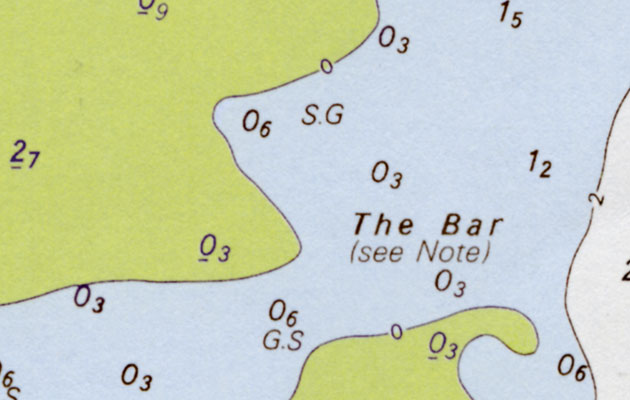
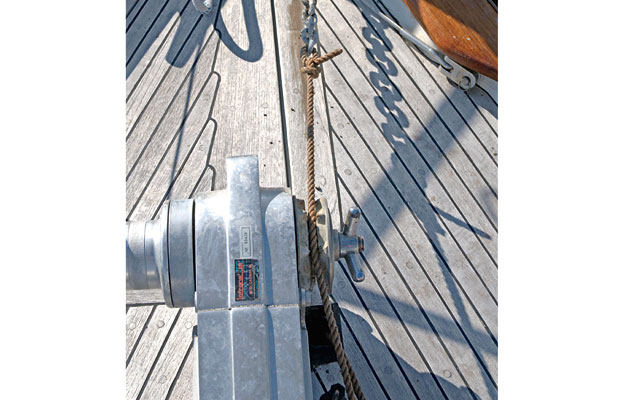







































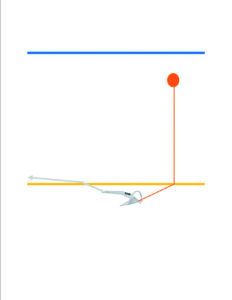
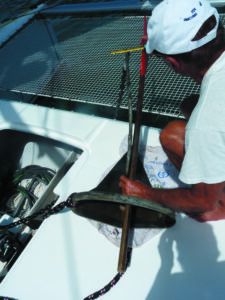
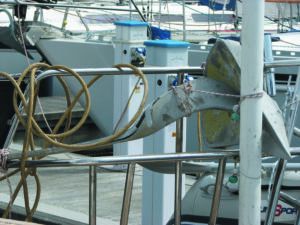
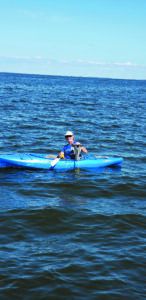










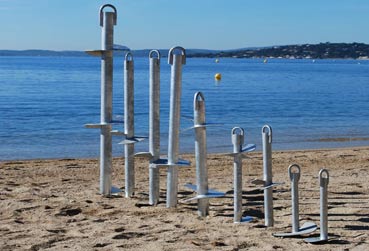
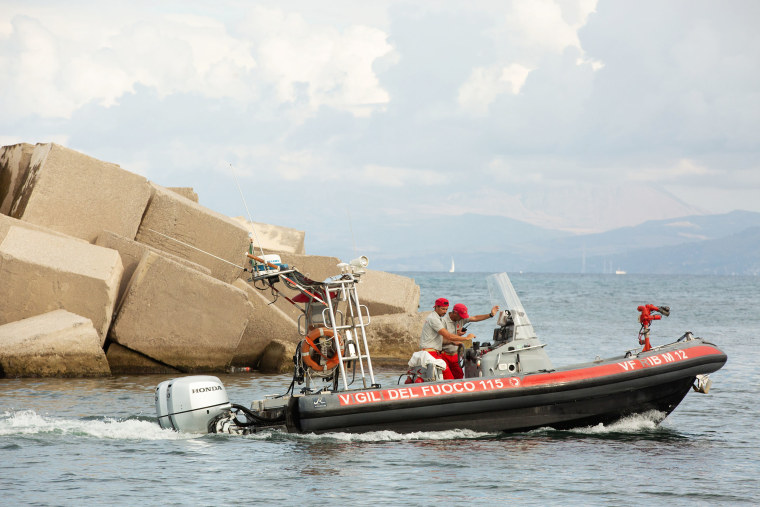
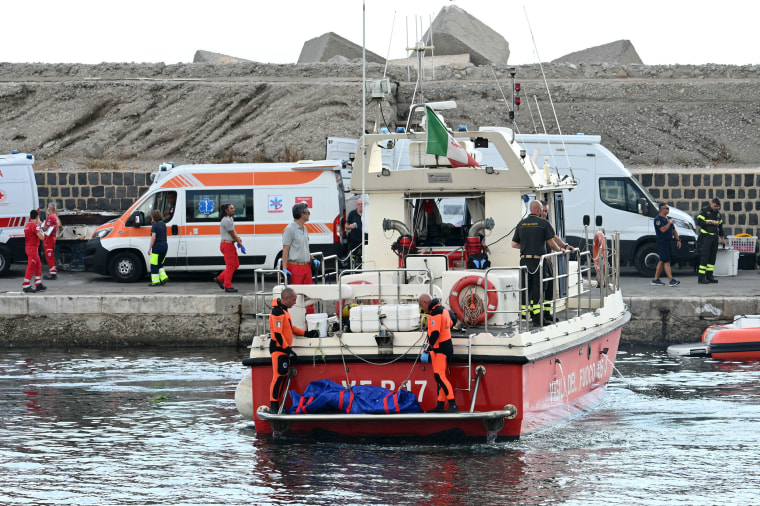

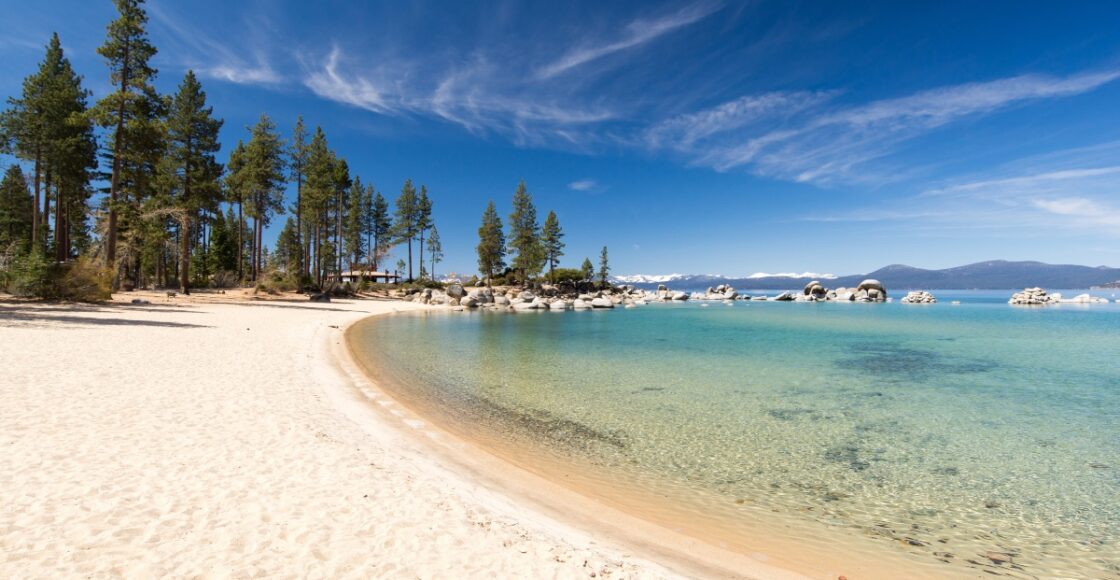

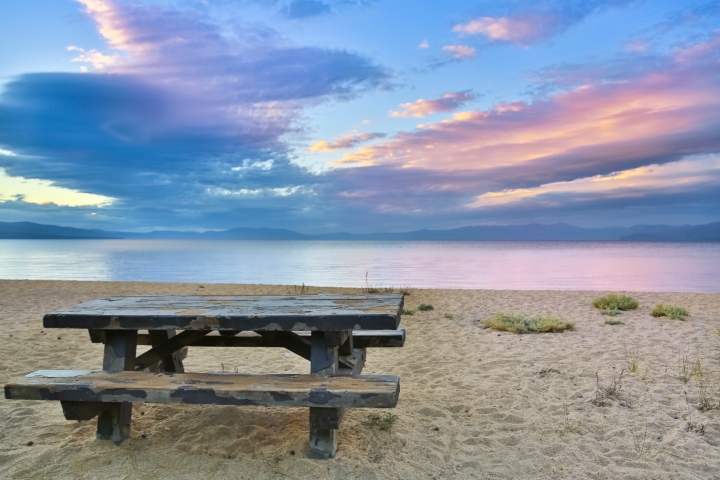

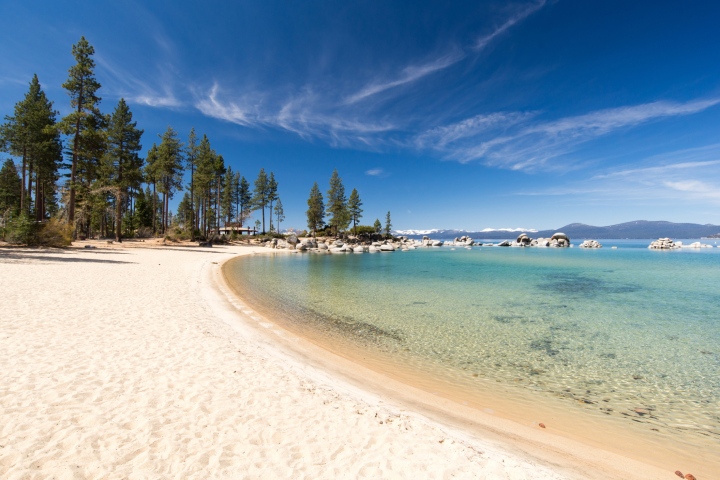
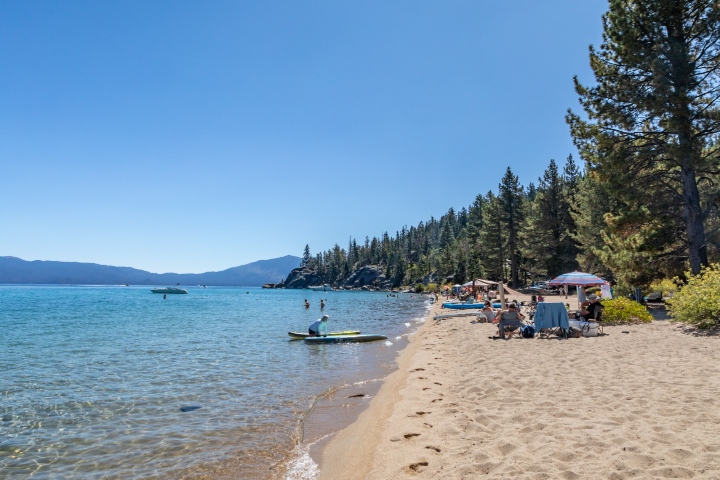

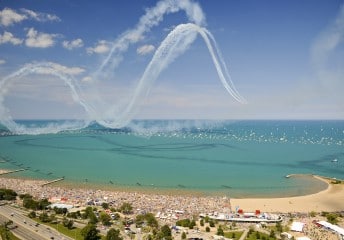
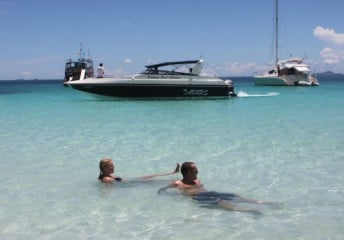
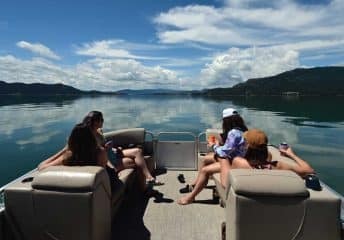
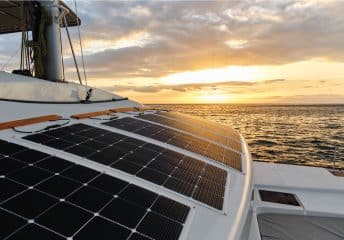
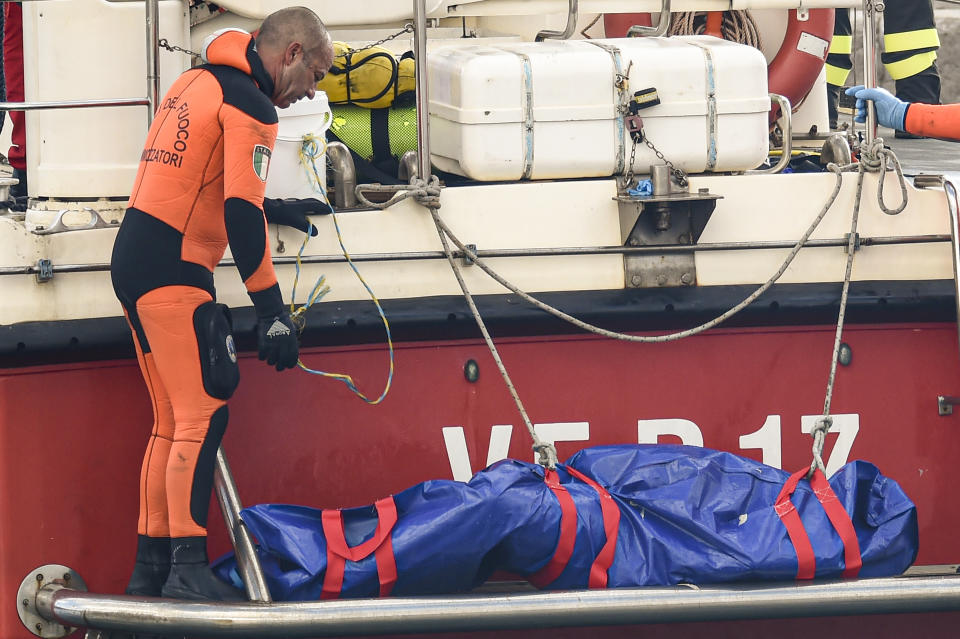






IMAGES
COMMENTS
Shapes. (a) Shapes shall be black and of the following sizes: (i) a ball shall have a diameter of not less than 0.6 meter; (ii) a cone shall have a base diameter of not less than 0.6 meter and a. height equal to its diameter; (iii)a cylinder shall have a diameter of at least 0.6 meter and a height of. twice its diameter;
With the anchor line firmly cleated on the bow, clip the ring over the anchor line and snap on the carabiner to capture the line within the ring. Then throw the ball overboard. Motor forward toward the anchor at enough of an angle so that you do not run over the rode. As you come up over the anchor, you can have a crewmember move the rode from ...
I think we can all agree that pulling an anchor can be hard on the back. ⚓️ Especially when spending a day bottom fishing. Each time you go to another spot t...
The Theory. Using an anchor ball is like heaving a line over a tree branch and connecting one end to a truck's hitch in order to raise a heavy weight at the other end. Since limbs are rare on the water, run the rode through the ring, which is supported by the buoyancy of the ball. The boat is the truck, the ring and ball the limb.
An anchor ball is a round fender with enough buoyancy to support a rode and anchor. A 20-inch-diameter ball has approximately 180 pounds of buoyancy and is the most popular size used by seasoned skippers. ... The combination of the ball's bouyancy and the boat's pull lifts and yanks the anchor out backward, and the anchor surfaces with ...
A general rule of thumb is to use a ratio of 5:1 or 7:1 for the length of the anchor chain to the depth of the water. For example, if the water is 10 feet deep, deploy 50 to 70 feet of chain. 4. Drop the anchor. Carefully lower the anchor over the bow of your boat while paying out the chain.
In today's video we add some boat upgrades including a new anchor, chain, line, boat lines and some safety items. I show you how to use an anchor ball and ri...
Choosing an anchor is easy, choosing the right one for your boat can be very difficult. Your first task in choosing an anchor is to have an understanding of three things: Your Boat - Your boats' size, weight and design characteristics affect what kind of anchor you will need to use. For instance, a 30 foot 10,000 pound houseboat needs a larger ...
The anchor rode, which connects your boat to the anchor, is critical for holding power. The scope, typically measured in a ratio of the rode's length to the water's depth, is an important factor for the anchor's performance. A common recommendation is using a 4:1 scope for temporary mooring and a 7:1 scope for overnight anchoring.
Description. Easy to use, maintenance free, and much cheaper than a windlass! Simply place the anchor ring over your anchor line, attach the anchor ball, lower the ball overboard, and run a slow course 30-45 degrees away from the anchor. This will move the ball down the anchor line to the anchor, pulling it free, and floating it to the surface.
Almost no boats (but me…now!) display the "at anchor" day shape where I cruise. It is a requirement as indicated in the previous post. The problem comes if there is a problem. A PWC hit an anchored sailboat in a local area used as an undesignated anchorage. In broad daylight. There were injuries to the operator and passenger and damage to both vessels.
3496 posts · Joined 2006. #28 · Aug 15, 2010. The Plastimo anchor ball is just two black plastic circles that slot together and look like a ball in silhouette from any angle. Similarly, the inverted cone is also just two trapezoids slotted together to form a cone shape.
A weight of 5-10 times boat length is a good rule of thumb, as a bare minimum. The heavier the better, as long as you don't have to move it. Pyramid Anchor: The cast-iron Dor-Mor pyramid mooring anchor is a superior alternative to the mushroom. Its smaller size, concentrated weight and pyramid shape allows it to embed itself more rapidly ...
Silt Good for most anchor types. Clay Once set, holding is good for most anchors. An anchor with a sharp tip will set more readily. Sand Variable, depending on sand hardness but an anchor with a large surface area is preferable. Gravel, rock and weed These bottom types are generally unsuitable for anchoring.
An anchor trip line is a stout line connected from the after end of the anchor fluke to a marker buoy so that the anchor can later be retrieved. The length of the line is adjusted to be straight up and down at high tide level so that the float marks the approximate position of the anchor. If the anchor snags on a rock or harbor debris, you have ...
OUT OF STOCK. CURRENTLY OUT OF STOCK -- Skrew Mooring Small Boat size: 29.5 inches tall with a 10 inch helicoid disk. This Skrew Mooring will hold up to a 3.5 ton or 7000 lb. boat. The Skrew Mooring is easy to install. Simply screw the Spade Skrew down, attach chain to mooring ball and you are all set. CALL TO ORDER!
Of the 22 people onboard, 15 survived despite storm conditions and darkness, climbing onto a lifeboat before being rescued by a nearby sailboat. The crew members have made no public statements so ...
Emergency workers in southern Italy are still hunting for six people missing after a tornado sank a luxury yacht early Monday - prompting an air and naval operation off the coast of Sicily.
Cruise to park's Rubicon Point, one of the deepest drop-offs in the lake, attracting scuba divers and fishing enthusiasts. Get incredible views of the Balancing Rock, a massive boulder perched precariously on a narrow stone base. Anchor at a secluded cove, enjoy the peace and quiet. Explore boat rentals near D.L. Bliss State Park Zephyr Cove
The sailboat's captain, Karsten Borner, said his craft sustained minimal damage — the frame of a sun awning broke — even with winds that he estimated had reached 12 on the Beaufort wind scale ...
Manufacturers such as Anchor-Caddie, Ironwood Pacific and T-H Marine offer these systems in several variations. The basic system consists of a buoy attached to a ring with a shackle or short length of rope. The buoy must be large enough to support the weight of the anchor and chain. The ring is designed for easy attachment to your anchor's rope.
Top Nizhny Novgorod Oblast Sports Complexes: See reviews and photos of Sports Complexes in Nizhny Novgorod Oblast, Russia on Tripadvisor.
Nizhny Novgorod Oblast (Russian: Нижегородская область, romanized: Nizhegorodskaya oblast') is a federal subject of Russia (an oblast).Its administrative center is the city of Nizhny Novgorod.It has a population of 3,119,115 as of the 2021 Census.From 1932 to 1990 it was known as Gorky Oblast (Russian: Горьковская область).
Nizhny Novgorod (/ ˌ n ɪ ʒ n i ˈ n ɒ v ɡ ə r ɒ d / NIZH-nee NOV-gə-rod; [14] Russian: Нижний Новгород, IPA: [ˈnʲiʐnʲɪj ˈnovɡərət] ⓘ lit. ' Lower Newtown '; colloquially shortened to Nizhny) [a] is the administrative centre of Nizhny Novgorod Oblast and the Volga Federal District in Russia.The city is located at the confluence of the Oka and the Volga rivers in ...
The captain of the sailboat that rescued survivors said his craft sustained minimal damage — the frame of a sun awning broke — even with winds that he estimated reached 12 on the Beaufort wind ...
Black Folding Anchor Ball 5 out of 5 Customer Rating Model # 217559 Mfg # 16185. $19.99 Model # 217559 Mfg # 16185. Quantity not available. Please adjust. ... The internationally recognized signal for a boat at anchor, this black ball is 11-7/8" in diameter, made of PVC, weighs just 1 pound and folds flat for storage. For vessels less than 15 ...
Top Nizhny Novgorod Water Sports: See reviews and photos of Water Sports in Nizhny Novgorod, Russia on Tripadvisor.